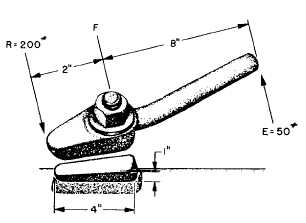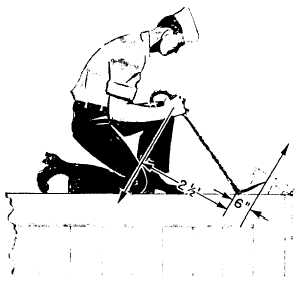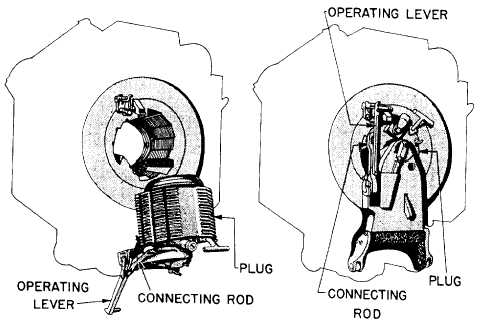Figure 1-10.-It’s a dog.
APPLICATIONS AFLOAT AND ASHORE
Doors, called hatches aboard a ship, are locked shut
by lugs called dogs. Figure 1-10 shows you how these
dogs are used to secure the door. If the handle is four
times as long as the lug, that 50-pound heave of yours
is multiplied to 200 pounds against the slanting face of
the wedge. Incidentally, take a look at the wedge—it’s
an inclined plane, and it multiplies the 200-pound force
by about 4. Result: Your 50-pound heave actually ends
up as a 800-pound force on each wedge to keep the hatch
closed! The hatch dog is one use of a first-class lever in
combination with an inclined plane.
The breech of a big gun is closed with a breech plug.
Figure 1-11 shows you that this plug has some
interrupted screw threads on it, which fit into similar
Figure 1-12.-Using a wrecking bar.
interrupted threads in the breech. Turning the plug part
way around locks it into the breech. The plug is locked
and unlocked by the operating lever. Notice that the
connecting rod is secured to the operating lever a few
inches from the fulcrum. You’ll see that this is an
application of a second-class lever.
You know that the plug is in there good and tight.
But, with a mechanical advantage of 10, your
100-pound pull on the handle will twist the plug loose
with a force of a half ton.
If you’ve spent any time opening crates at a base,
you’ve already used a wrecking bar. The sailor in
figure 1-12 is busily engaged in tearing that crate open.
Figure 1-11.-The breech of an 8-inch gun.
1-6





